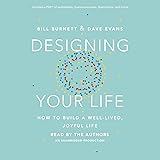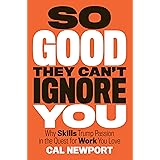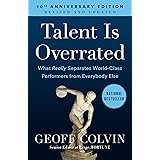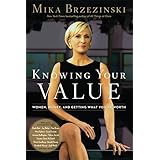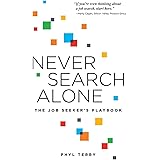Have you ever found yourself at a career crossroads, wondering if it’s better to ‘jump ship’ every few years for new opportunities or cultivate deep loyalty within a single company? As the insightful discussion in the video above highlights, this isn’t a simple yes-or-no question. Instead, successful
strategic career planning
hinges on a nuanced understanding of your long-term goals and a proactive approach to skill development and relationship building.1. Overcoming the Sunk Cost Fallacy in Your Career Choices
One of the biggest traps individuals fall into is the ‘sunk cost fallacy.’ Imagine if you’ve invested significant time and effort into a role or company, even if it no longer serves your growth. It can feel incredibly difficult to walk away.
The speaker in the video aptly uses the analogy of a movie ticket: you’ve paid for a bad movie, but staying to watch the rest only wastes more of your valuable time. This principle is directly applicable to career choices.
Your past investments in a job or company, whether it’s years spent or extensive training undertaken, are already ‘gone.’ What truly matters is the investment you are about to make in your future. Don’t let past efforts dictate future decisions if they aren’t aligned with your evolving career trajectory.
2. Charting Your Long-Term Career Trajectory for Executive Roles
Instead of merely reacting to job openings, successful professionals think forward. They start with the end in mind, particularly if aspiring to executive or C-level positions.
This approach involves working backward from your ultimate goal. What skills, experiences, and networks would a CEO, for example, possess? These often span leadership, domain expertise, strategic marketing, sales, operational excellence, financial acumen, and exceptional customer service.
Companies you work for along the way become mediums for acquiring these critical skills. Your role is to proactively seek out and take advantage of every opportunity they offer for learning and development. This continuous skill development is paramount, both inside and outside the workplace.
What Skills Are Essential for Executive Leadership?
To reach C-level executive roles, a diverse and robust skill set is typically required. It extends far beyond technical proficiency and delves deep into strategic capabilities. Consider the following key areas:
- **Strategic Vision & Planning:** The ability to see the big picture, anticipate market shifts, and formulate long-term goals. This involves understanding complex business ecosystems and translating vision into actionable plans.
- **Financial Acumen:** A solid grasp of financial statements, budgeting, investment analysis, and capital allocation. Executives must make decisions that positively impact the company’s bottom line.
- **Operational Excellence:** Understanding how to optimize processes, improve efficiency, and ensure effective delivery of products or services. This often involves cross-functional collaboration.
- **Leadership & People Management:** Inspiring, motivating, and developing teams. This includes fostering a positive company culture, managing performance, and effective delegation.
- **Marketing & Sales Prowess:** While not every executive is a CMO, an understanding of market dynamics, customer acquisition, and revenue generation strategies is crucial for growth.
- **Innovation & Adaptability:** The capacity to embrace change, drive innovation, and navigate uncertainty. The business landscape is constantly evolving, requiring leaders to be agile.
- **Communication & Influence:** Articulating complex ideas clearly, influencing stakeholders, and building consensus across diverse groups. This includes both internal and external communication.
Your
strategic career planning
should focus on progressively acquiring and refining these capabilities, ensuring you’re continuously building the inventory of skills necessary for future leadership roles.3. Navigating Growth: Up the Ladder and Sideways Expansion
Many people equate career growth solely with moving ‘up the ladder’ – progressing from analyst to senior analyst, manager, director, and so forth. While this vertical progression is valuable, it’s only one dimension of career advancement.
Consider the importance of ‘growing sideways,’ as the speaker mentions. This involves expanding your knowledge base and skill set across different functions, industries, or product lines. For instance, an engineer might learn about marketing, or a finance professional might gain experience in operations.
Imagine if you spent five years mastering one software product, then took on a project involving an entirely different solution line or a new industry vertical. This sideways movement broadens your perspective, makes you more versatile, and builds resilience in your professional profile. It’s about accumulating diverse experiences that fill gaps in your expertise, ultimately making you a more well-rounded and valuable leader.
4. The Strategic & Personal Factors in Job Hopping vs. Loyalty
When is it appropriate to switch jobs, and when should you double down on company loyalty? The ‘it depends’ answer is rooted in your personal growth and trajectory, not just perceived external opportunities.
If you’re at a great organization, passionate about your work, enjoy your colleagues, feel well-compensated, and are continually presented with opportunities for new responsibilities and learning, why leave? Loyalty to such an organization can provide stability and deeper institutional knowledge, which is valuable for executive roles.
However, if you find yourself stagnant, no longer learning, or unable to acquire the skills necessary for your defined
career trajectory
, then exploring external opportunities becomes a strategic move. The decision should always be based on whether your current situation provides the best avenue for continuous learning, enjoyment, and progression toward your long-term goals.5. Cultivating Career Advocates: The Power of Long-Term Networking
Building a robust professional network is often discussed, but its true power lies in cultivating advocates. There’s a significant difference between asking someone to be a reference and having someone champion your capabilities.
The speaker emphasizes thinking long-term when building relationships. Instead of immediately asking for a favor, focus on how you can help others, add value, and build genuine connections. This is an investment that pays dividends over time.
Consider the speaker’s own example: after nearly two decades in IT consulting, dedicating himself to helping others, he opened his own recruitment firm. He wasn’t shy about calling everyone he had ever helped because he had invested 18 years in building those relationships. This long-term approach to networking ensures that when you do need support for a job search—whether internal or external—you have a network of people who genuinely want to see you succeed and are willing to advocate on your behalf. Building this professional network is a continuous effort, not a last-minute scramble.
6. Actionable Steps for Robust Strategic Career Planning
To proactively manage your career trajectory and ensure continuous growth, consider these actionable steps:
- **Conduct a Skill Inventory:** Regularly assess your current skills against those required for your target roles. Identify gaps and prioritize which ones to develop next.
- **Seek Mentors and Coaches:** Identify individuals who have achieved what you aspire to and seek their guidance. A good coach or mentor can provide invaluable insights and accountability.
- **Define Growth Metrics:** What does ‘growth’ mean to you? Is it new skills acquired, projects led, teams managed, or financial outcomes? Establish metrics to track your progress.
- **Review Your Trajectory Annually:** Don’t let your career happen to you. At least once a year, evaluate if your current role and responsibilities are aligning with your long-term
strategic career planning
goals. Adjust your course as needed to stay on track.


